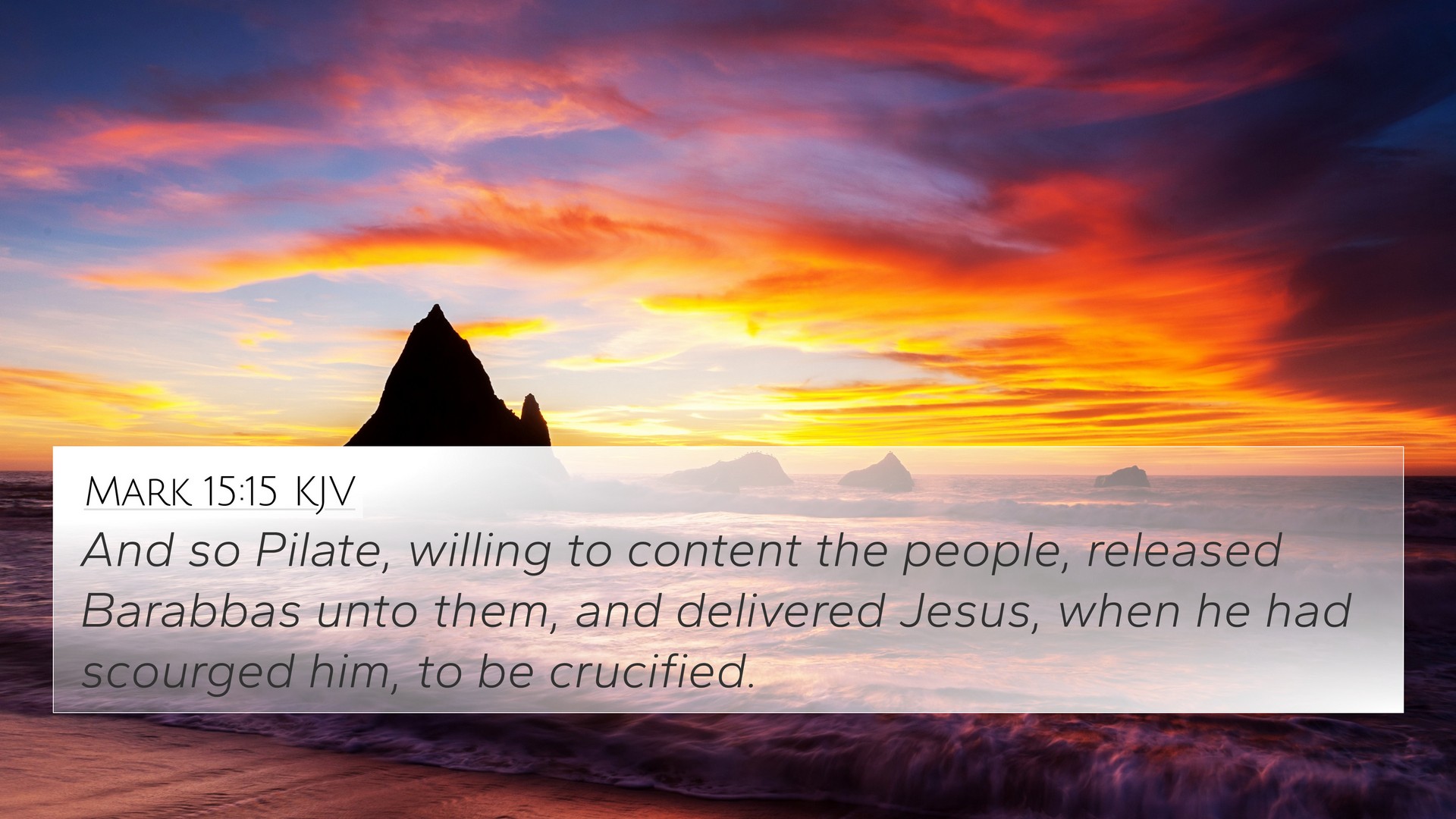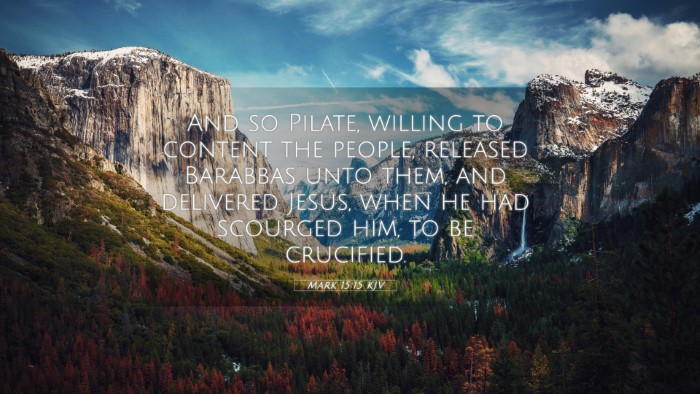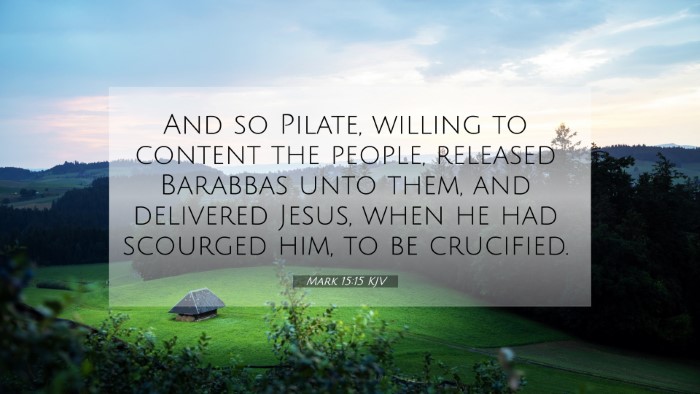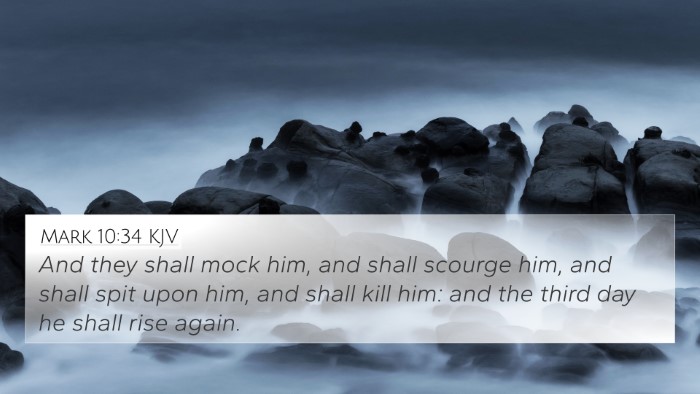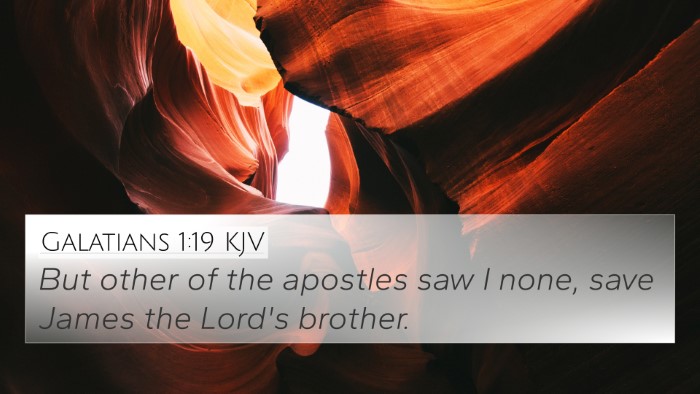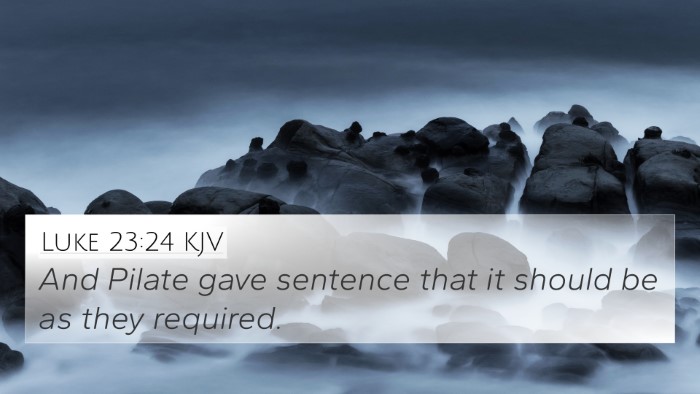Understanding Mark 15:15
Mark 15:15 states: "So Pilate, willing to content the people, released Barabbas unto them, and delivered Jesus, when he had scourged him, to be crucified." This verse provides crucial insight into the events leading to the crucifixion of Jesus Christ. Below is a comprehensive explanation and analysis of its meaning, drawing from public domain commentaries.
Context of Mark 15:15
This verse comes in the context of Jesus' trial before Pontius Pilate. The pressure from the crowd played a pivotal role in Pilate's decision-making process, highlighting the theme of human weakness and the struggle between justice and public opinion.
Key Themes in Mark 15:15
- Political Pressure: Pilate succumbs to the demands of the crowd.
- The Fulfillment of Prophecy: The event aligns with Old Testament prophecies regarding the suffering servant.
- Scourging of Jesus: Highlights the physical suffering endured before crucifixion.
Commentary Insights
Insights from notable commentators provide a deeper understanding of this verse:
- Matthew Henry: Henry notes Pilate's attempt to appease the people, indicating a weak leadership that prioritizes public approval over justice. He emphasizes that this decision not only condemned Jesus unjustly but also highlights the cruelty of humanity.
- Albert Barnes: Barnes points out the significance of Barabbas' release. His name means 'son of the father', which creates a stark contrast with Jesus, the true Son of God. This parallel serves to deepen the understanding of the choice made by the people.
- Adam Clarke: Clarke elaborates on the scourging as a customary punishment that often preceded crucifixion. He remarks on the brutality of Roman punishment and suggests that Pilate hoped that the scourging would satisfy the crowd's thirst for justice, thus avoiding the actual execution of Jesus.
Cross-References for Mark 15:15
To understand Mark 15:15 further, here are cross-references that highlight its connections to other biblical texts:
- Matthew 27:26: Similar account of Pilate releasing Barabbas and ordering the scourging of Jesus.
- Luke 23:25: Additional details regarding the release of Barabbas and the delivery of Jesus to be crucified.
- John 19:1: Describes Pilate scourging Jesus, reinforcing the brutality inflicted upon Him.
- Isaiah 53:5: Prophecy describing the suffering of the Messiah, relating to Jesus' scourging and eventual death.
- Acts 3:14: Peter mentions Barabbas in his address to the people, drawing attention to their choice to reject Jesus.
- Hebrews 12:2: Encourages believers to keep their eyes on Jesus, who endured such suffering, providing context to His scourging.
- Revelation 5:6: Describes Jesus as the Lamb who was slain, connecting the choice made in Mark 15:15 to ultimate redemption.
Thematic Connections Through Cross-Referencing
The analysis of Mark 15:15 employs various tools for Bible cross-referencing:
- Bible Concordance: A valuable resource for locating verses and words related to themes found in Mark 15:15.
- Comparative Bible Verse Analysis: This method allows for understanding the differences and similarities of accounts in the Gospels.
- Cross-Reference Bible Study: Utilizing this approach fosters a deeper understanding of the narrative and its implications for believers.
How to Use Bible Cross-References
When studying Mark 15:15 and its implications, consider the following methods for effective cross-referencing:
- Identify Bible verses that relate to each other for a cohesive understanding of the narrative.
- Explore links between the Old and New Testament to see the fulfillment of prophecies.
- Analyze thematic connections between different biblical texts to observe common threads.
Conclusion
Mark 15:15 serves as a pivotal moment in the Passion narrative of Christ. By cross-referencing with other scriptures and utilizing commentary insights, one can appreciate the complex interplay of justice, prophecy, and human failings that culminate in the crucifixion event. This holistic analysis not only enhances our understanding of the text but reveals the profound truths contained within the Scriptures.
